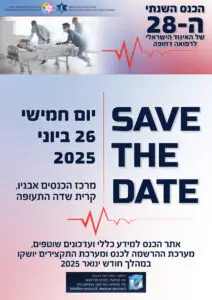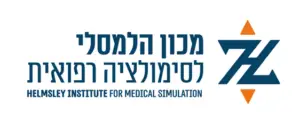פוסט זה זמין גם ב:
עברית
Shaya, Yossia,b; Stein, Michaela,c; Gershovitz, Lirone; Furer, Ariele; Khalaf, Ananb; Drescher, Michael J. MDa,b; Gabbay, Uri MD, MPHa,f
Abstract 
Background:
The detection of hemorrhage in trauma casualties may be delayed owing to compensatory mechanisms. This study aimed to evaluate whether the cardiovascular reserve index (CVRI) on arrival detects massive hemorrhage and predicts hemorrhage development in trauma casualties.
Methods:
This was an observational prospective cohort study of adult casualties (≥18Y) who were brought to a single level-1 trauma center, enrolled upon arrival and followed until discharge. Vital signs were monitored on arrival, from which the CVRI and shock index (SI) were retrospectively calculated (blinded to the caregivers). The outcome measure was the eventual hemorrhage classification group: massive hemorrhage on arrival (MHOA) (defined by massive transfusion on arrival of ≥6 [O+] packed cells units), developing hemorrhage (DH) (defined by a decrease in Hemoglobin >1 g/dL in consecutive tests), and no significant hemorrhage (NSH) noted throughout the hospital stay. The means of each variable on arrival by hemorrhage group were evaluated using the Analysis of Variance. We evaluated the detection of MHOA in the entire population and the prediction of DH in the remainders (given that MHOA had already been detected and treated) by C-statistic predefined strong prediction by area under the curve (AUC)≥0.8, P≤0.05.
Results:
The study included 71 patients (after exclusion): males, 82%; average age 37.7Y. The leading cause of injuries was road accident (61%). Thirty-nine (54%) patients required hospital admission; distribution by hemorrhage classification: 5 (7%) MHOA, 5 (7%) DH, and 61 (86%) NSH. Detection of MHOA found a strong predictive model by CVRI and most variables (AUC 0.85-1.0). The prediction of DH on arrival showed that only lactate (AUC=0.88) and CVRI (0.82) showed strong predictive model.
Conclusions:
CVRI showed a strong predictive model for detection of MHOA (AUC>0.8) as were most other variables. CVRI also showed a strong predictive model for detection of DH (AUC=0.82), only serum lactate predicted DH (AUC=0.88), while all other variables were not found predictive. CVRI has advantages over lactate in that it is feasible in pre-hospital and mass casualty settings. Moreover, its repeatability enables detection of deteriorating trend. We conclude that CVRI may be a useful additional tool in the evaluation of hemorrhage.









